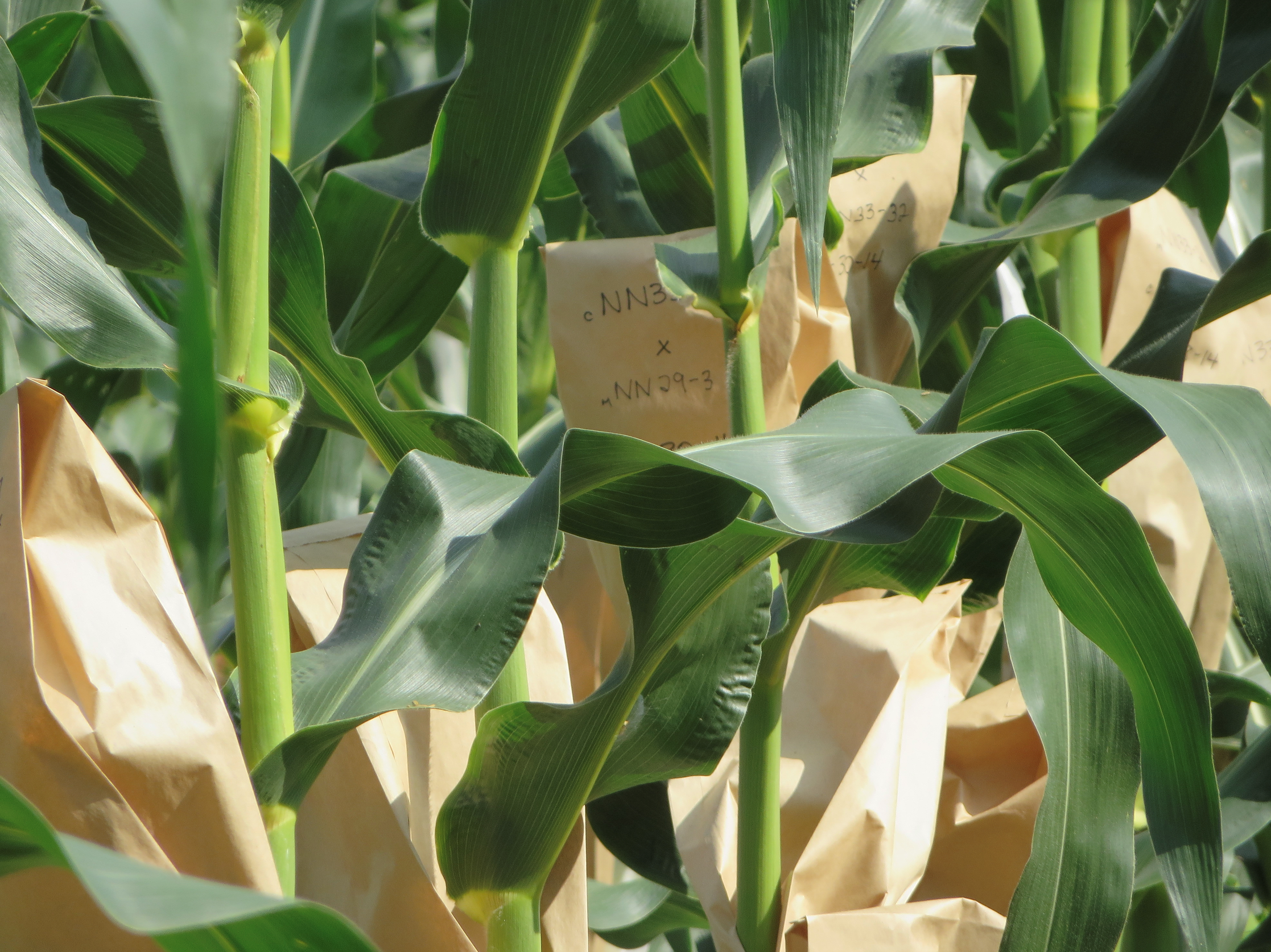In the Field
In the Dawe lab, we primarily utilize the model organism Maize.
Maize
Maize (Zea mays L.) is not only an important cash crop in the Americas, but it also has a long history as a model organism for cytological and genetic research. It has 10 pairs of chromosomes that are large and easy to study under the microscope, providing a window into the process of chromosome segregation. Â Seeing the outcome of meiosis requires making crosses and looking at progeny. The spatial separation of male (tassel) and female (ear) reproductive organs in maize, and the large number of seeds produced by one cross, make these experiments both fun and informative. These natural attributes and the beauty of the kernels have made maize an alluring and powerful genetic system. You can see our review on the maize system for a better perspective – http://www.genetics.org/content/199/3/655.
Our work involves growing and crossing corn at every possible turn! To study meiosis and centromeres, we grow plants to nearly full height and harvest the young tassels. The meiotic drive property of abnormal chromosome 10 cannot be studied at all without making crosses, since the phenotype is a change in segregation ratios. Our studies of perenniality involve interspecies hybrids and large field screens, and our work on centromere-mediated haploid production is based on CRISPR-induced mutants combined with variants of the Centromeric Histone H3 gene. All of our alumni have grown and worked with the maize plant and we consider it part of the family.
 The Dawe Lab
The Dawe Lab